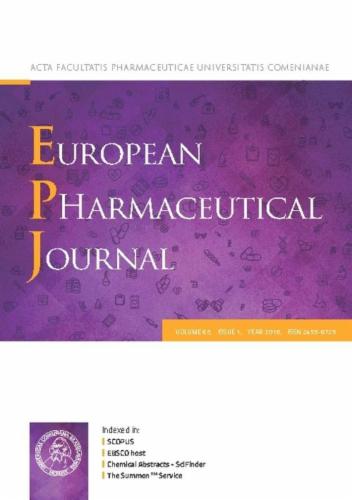A peptide mimetic therapeutic strategy targeting dysfunction of the scaffold protein DISC-1 in psychiatric disorders
IF 4.3
3区 医学
Q1 PHARMACOLOGY & PHARMACY
引用次数: 0
Abstract
Disrupted in schizophrenia 1 (DISC1) is a scaffold protein that regulates several physiological processes ranging from cellular division to neurodevelopment, and its dysfunction contributes to various neurological disorders including schizophrenia, bipolar and mood disorders, and autism. Thus, deciphering its native functions and pathophysiological roles is crucial. In this report, three disease-associated mutants of the C-region of DISC1, i.e., S713E, S704C, and L807-frameshift, were examined to further elucidate the role of DISC1 in cell division. We demonstrate that the mutations do not render the variants functionally inactive; instead, the interaction sites are presumably lost during the aggregation of the DISC1 C-region into amyloid-type fibrils. The minimal fibrillizing element in the C-region is the intrinsically disordered β-core (716‒761) that houses a segment absent in the splice variant DISC1Δ22aa, which cannot bind proteins of the mitotic spindle complex and thus hampers cellular proliferation. Based on these structure-function relationships, we present a rational drug development strategy using phage display technology and highlight the role of peptide mimetics in curtailing the agglomeration of fibrils.

一种针对精神疾病中支架蛋白DISC-1功能障碍的肽模拟治疗策略。
DISC1是一种调节从细胞分裂到神经发育等多种生理过程的支架蛋白,其功能障碍导致多种神经系统疾病,包括精神分裂症、双相情感障碍、情绪障碍和自闭症。因此,破译其天然功能和病理生理作用是至关重要的。在本报告中,我们检测了DISC1 c区三个疾病相关突变体,即S713E、S704C和l807移码,以进一步阐明DISC1在细胞分裂中的作用。我们证明突变不会使变体在功能上失活;相反,相互作用位点可能是在DISC1 c区聚集成淀粉样原纤维的过程中丢失的。c区最小的纤裂元件是内在无序的β-核(716-761),其中包含剪接变体DISC1Δ22aa中缺失的片段,该片段不能结合有丝分裂纺锤体复合体的蛋白质,从而阻碍细胞增殖。基于这些结构-功能关系,我们提出了利用噬菌体展示技术的合理药物开发策略,并强调了肽模拟物在减少原纤维团聚方面的作用。
本文章由计算机程序翻译,如有差异,请以英文原文为准。
求助全文
约1分钟内获得全文
求助全文
来源期刊
CiteScore
9.60
自引率
2.20%
发文量
248
审稿时长
50 days
期刊介绍:
The journal publishes research articles, review articles and scientific commentaries on all aspects of the pharmaceutical sciences with emphasis on conceptual novelty and scientific quality. The Editors welcome articles in this multidisciplinary field, with a focus on topics relevant for drug discovery and development.
More specifically, the Journal publishes reports on medicinal chemistry, pharmacology, drug absorption and metabolism, pharmacokinetics and pharmacodynamics, pharmaceutical and biomedical analysis, drug delivery (including gene delivery), drug targeting, pharmaceutical technology, pharmaceutical biotechnology and clinical drug evaluation. The journal will typically not give priority to manuscripts focusing primarily on organic synthesis, natural products, adaptation of analytical approaches, or discussions pertaining to drug policy making.
Scientific commentaries and review articles are generally by invitation only or by consent of the Editors. Proceedings of scientific meetings may be published as special issues or supplements to the Journal.

 求助内容:
求助内容: 应助结果提醒方式:
应助结果提醒方式:


